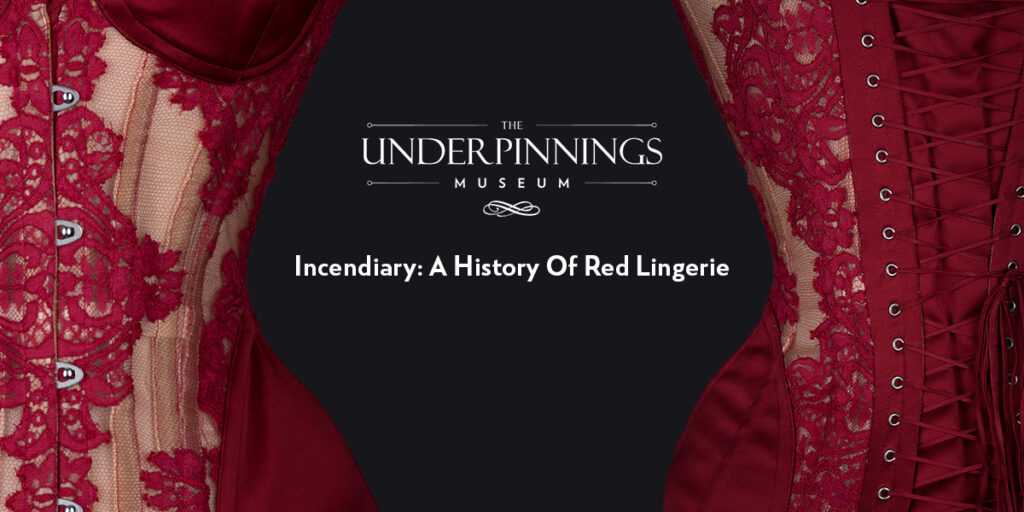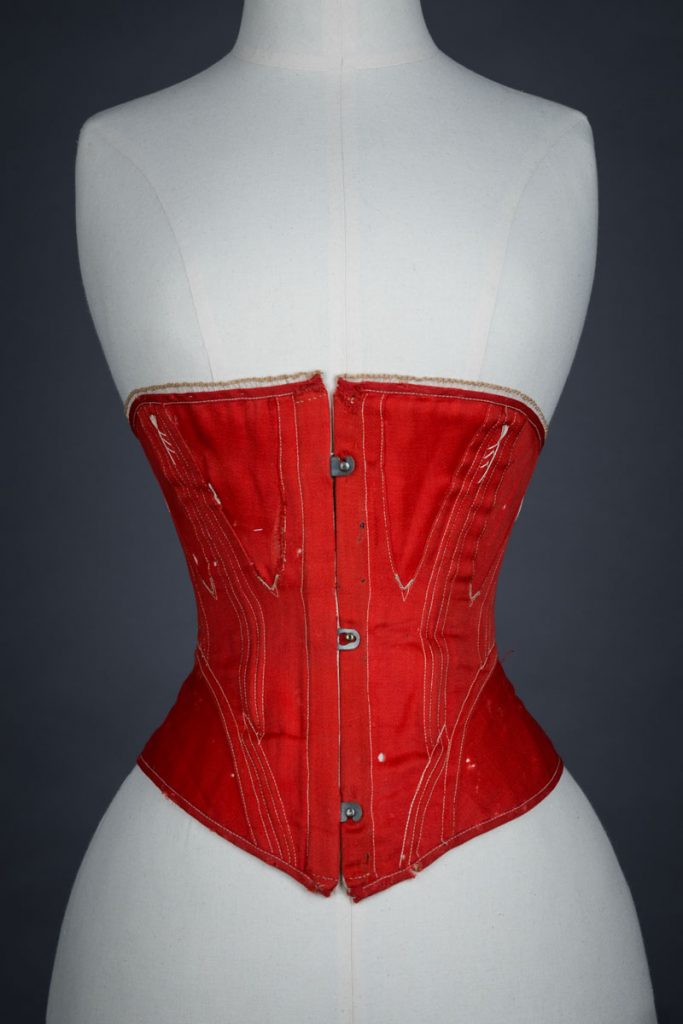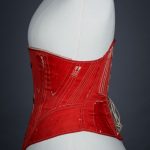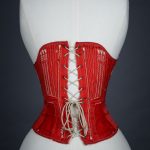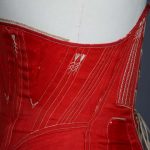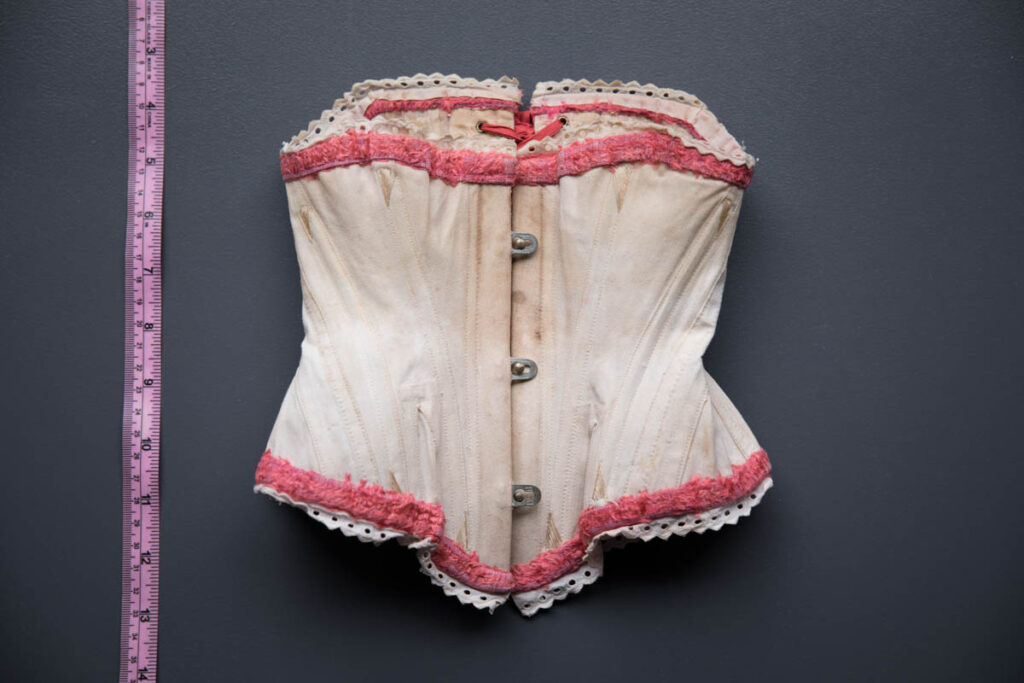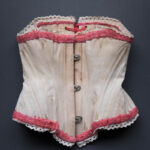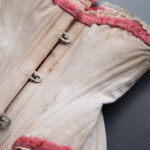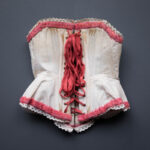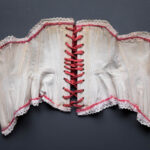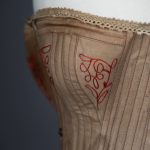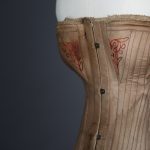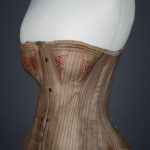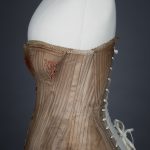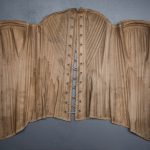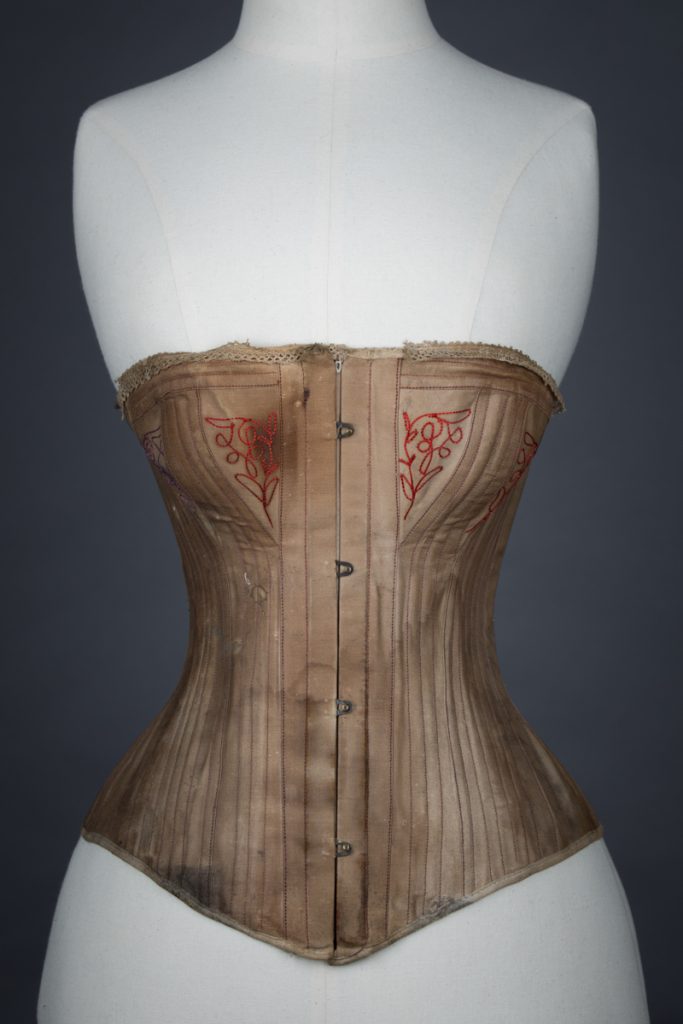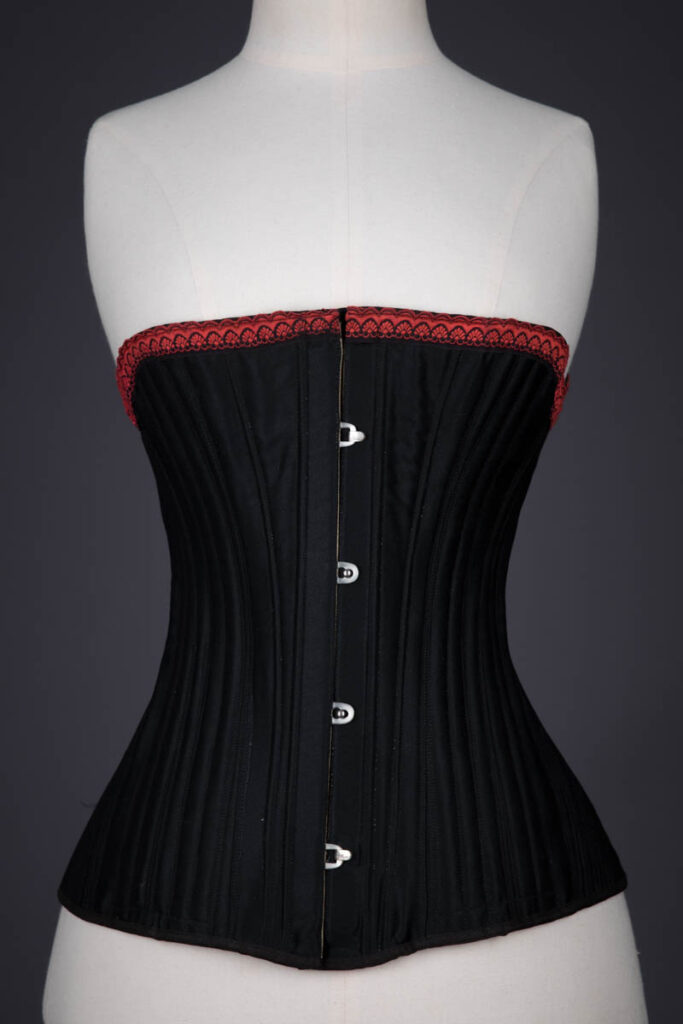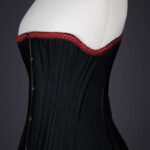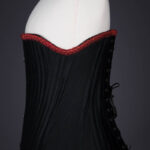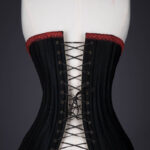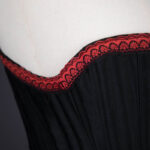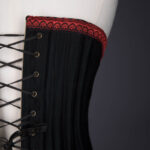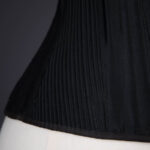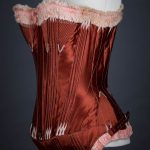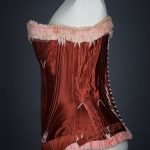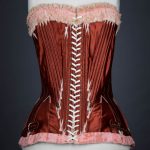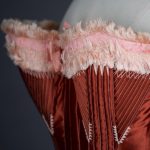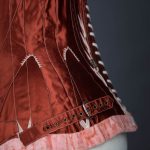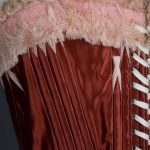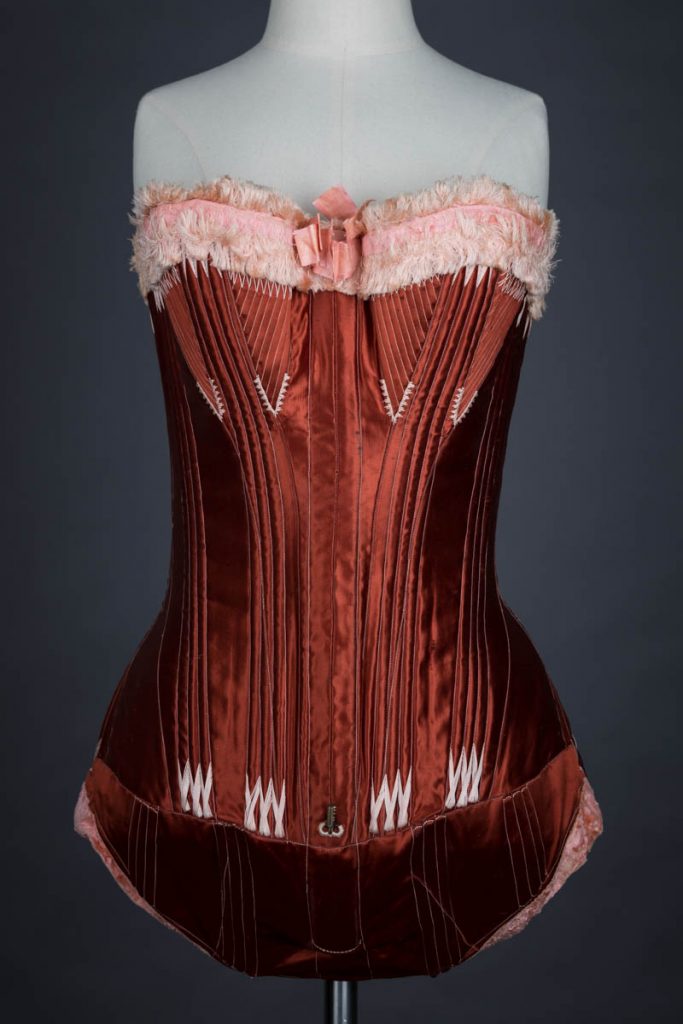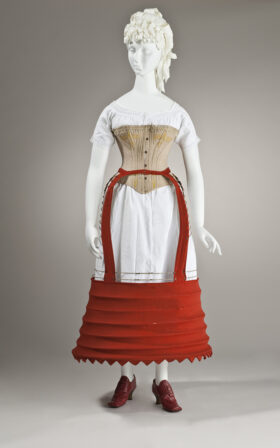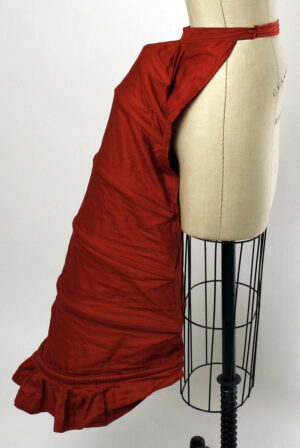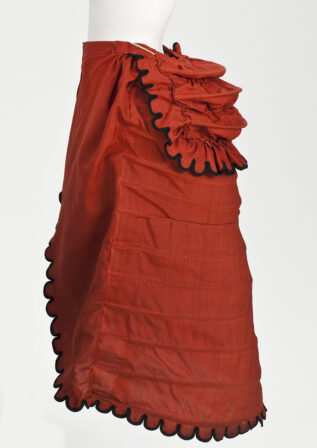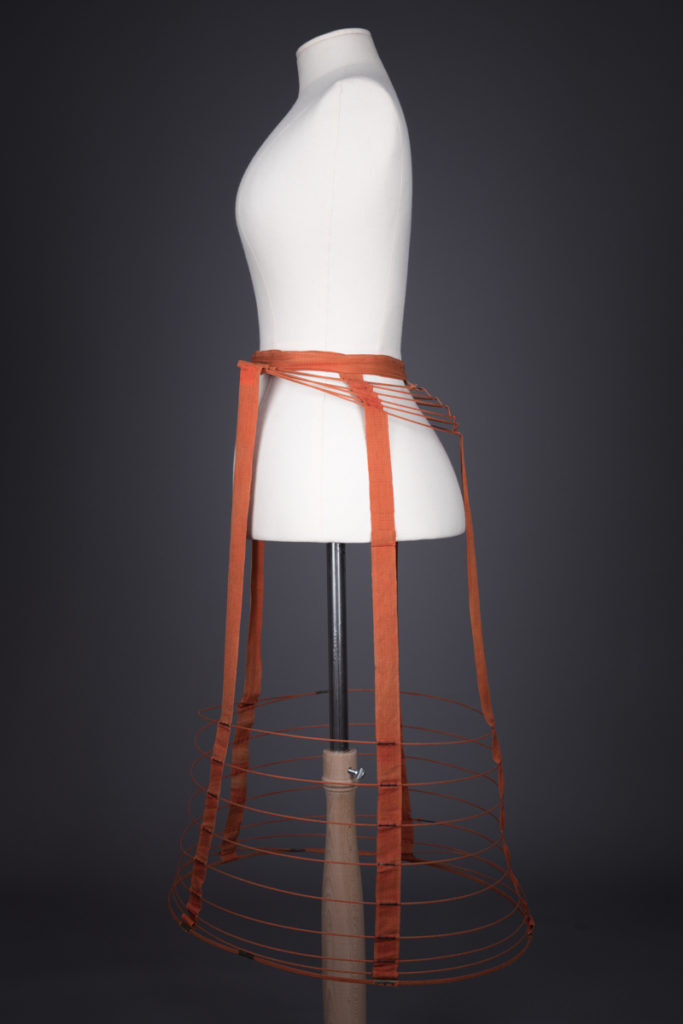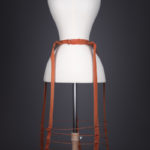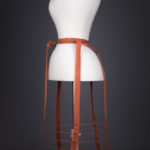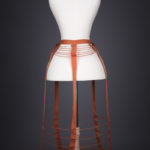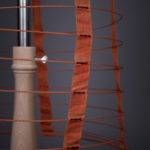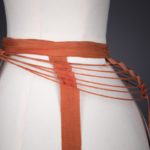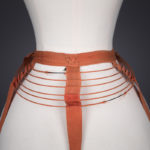The colour red is found in nature: in flowers, fruit, gemstones, fire, and blood. It is symbolically associated with a multitude of meanings, from lust and love to power, danger, and death. Scientists and psychologists have correlated red with male dominance, aggression, and victory. The symbology expert Michel Pastoureau wrote in his 2016 book, Red: The History of a Color (translated from the French): “Red is the archetypal color, the first color humans mastered, fabricated, reproduced, and broke down into different shades … This has given it primacy over all other colors through the millennia.”
When used to colour women’s lingerie, red’s poignant symbolism engages with societal perceptions of feminine sexuality and empowerment. During some parts of the nineteenth century, fashionable shades of red in women’s dress included scarlet, crimson, cardinal, garnet, ruby, poppy, and even a “dull deep hue” called “antique red” (Harper’s Bazaar, 1868). Yet opinions of brightly-coloured undergarments were vexed, variously considered abhorrent and improper, or stylish and inflammatory. New associations were formed by the middle of the twentieth century. Lingerie was marketed to women in countless shades of red, including flame, bright rose, spice, cherry, firecracker, and siren. These were considered fun and bold hues to enliven one’s wardrobe and were often combined with black for a “dramatic look” (Women’s Wear Daily, 1952). Since the sexual liberation movement of the 1960s, red lingerie has developed more romantic and seductive associations, gaining a reputation for being “sexy,” “red-hot,” “smouldering,” and “incendiary.”
Incendiary: A History of Red Lingerie tells this story through thirty objects, dating from circa the 1860s to 2017. Twenty-six of these are included in the Underpinnings Museum’s free and accessible digital collection which has been photographed by Tigz Rice Studios.
